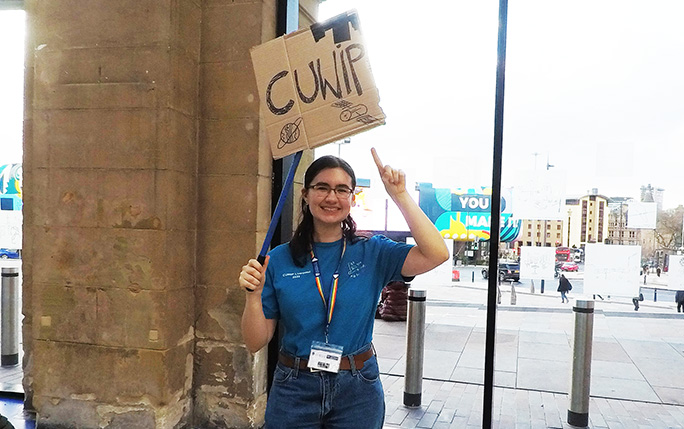Lauryn Eley
Though a passionate scientist now, I didn’t start off that way! When making my GCSE choices at 16, I purposely chose against taking the Triple Science option, reasoning “why would I want to spend half my week learning science?” – my teenage self would be horrified to see me now!
Though at 16 I wouldn’t have admitted it, physics was always an obvious choice for me. I was always strong at maths, but my more creative side, shaped by my love of subjects like English Literature, come into play in science in ways I did not anticipate in school. The ability to approach problems unconventionally is a key skill in research, and physics is one of the few subject areas that allows me to explore this while using my more analytical mathematical skills directly alongside.
At 18, I elected to pursue a BSc Physics with Astrophysics, transferring to the MPhys a year in. I found my MPhys degree at York to be challenging in a way I had never experienced before, which, while always a little scary, kept me interested and engaged. I loved particularly the real-world application of everything I learnt – being able to understand the physics of the universe really creates a new perspective on everyday life!
It was this enjoyment that led me to my PhD in X-Ray Imaging at the University of Liverpool, which I’m in my 2nd year of. I was not ready to leave physics behind after my undergraduate degree and thought that a PhD was the perfect opportunity to remain in science while having opportunities to teach and engage in outreach: two areas I found that I enjoyed during my undergrad. I was lucky to find my project, which lines up nicely with my Master’s project and research interests and lets me develop skills that I know I will be using in my planned medical imaging-based future career.
Before my PhD and still now, the promotion of equality in physics is something I care deeply about. I have often been the only woman in certain groups, starting from within my A-level class and continuing throughout my career. Attending and organising events such as CUWiP and the coffee mornings helps bridge this gap, but I believe there are many systematic issues that must be acknowledged and addressed as a responsibility of everyone in the field. It is important to showcase the diversity of people working in research, so everyone can feel that physics is, and will continue to be throughout the duration of a career, a place for everyone.
